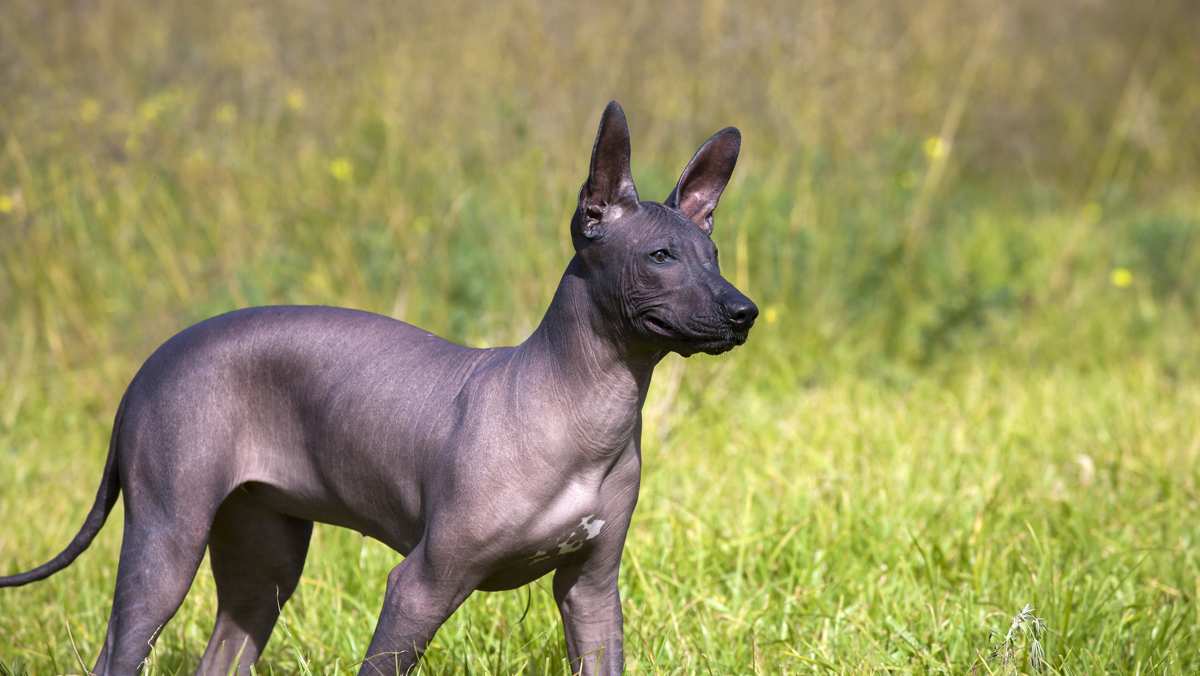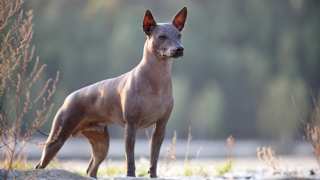Xoloitzcuintle Breed Details
The Xoloitzcuintle's name is a mouthful, but these basically small dogs are great for first-time dog owners, families with kids and homes with dogs. They have decent hunting and watchdog capabilities, but they are not suited for guard dog work. They can make great companion dogs as they love to be with people all the time, are great for snuggling and adapt to most any size home.
While they make wonderful pets, they do need a lot of socialization, training, and patience, and you should be aware of these Mexican hairless Dog facts:
PROS
- Very clean
- Easy to train
- Highly athletic
- Keen to learn new tricks
- No shedding with hairless type
- Coated variety sheds very little
- Can get along great with other dogs
- Hairless variety is wonderfully warm to the touch
CONS
- May bark a lot
- Extremely rare
- Matures slowly
- Prone to sunburn
- Not hypoallergenic
- Skin is very porous
- Can be overly curious
- Has a strong prey drive
- Can climb most anything
- Must be trained early on
- Can be extremely dominant
- Doesn't tolerate cold weather
- May be highly sensitive to touch
- Must be socialized while puppies
- Loud noises may cause emotional distress
- Can develop acne if skin is not properly cared for
- Can have skin-related health concerns while maturing
- Skin is very sensitive to chemicals, lotions, hard sleeping surfaces





